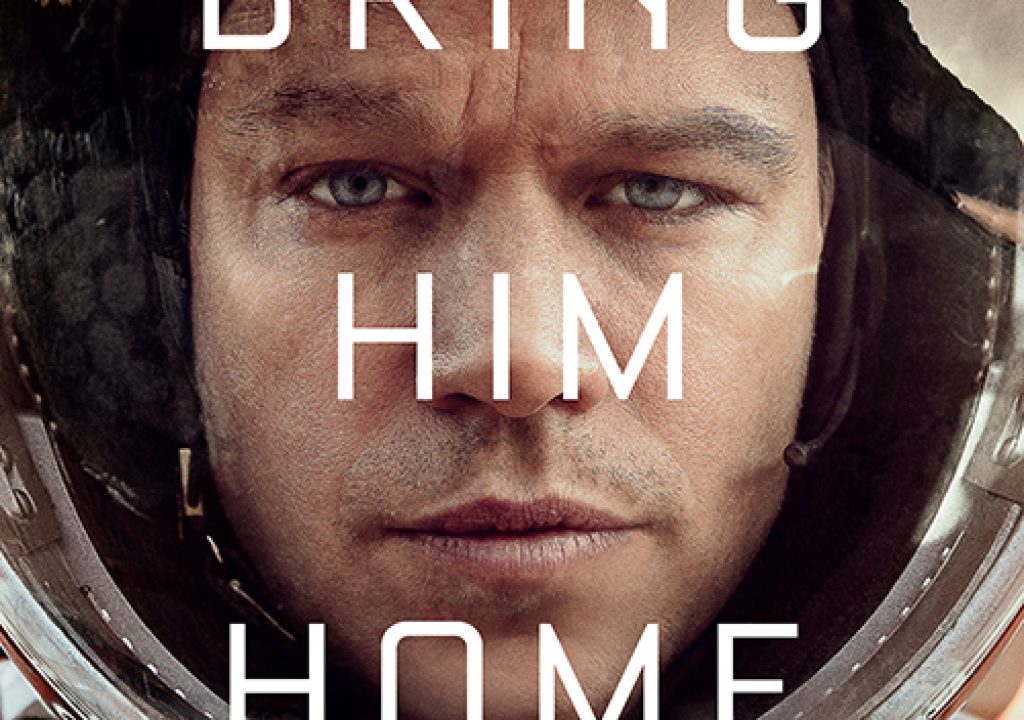In this installment of Art of the Cut, we talk to multi-Oscar-winning editor, Pietra Scalia about The Martian, his latest film collaboration with director Ridley Scott.
Ridley Scott is a consummate filmmaker, and his go-to editor for telling the big stories is Pietro Scalia. Scalia has won two Best Editing Oscars – JFK for Oliver Stone and Black Hawk Down for Ridley Scott – and been nominated twice more – Good Will Hunting for Gus Van Sant and Gladiator, again for Ridley Scott.
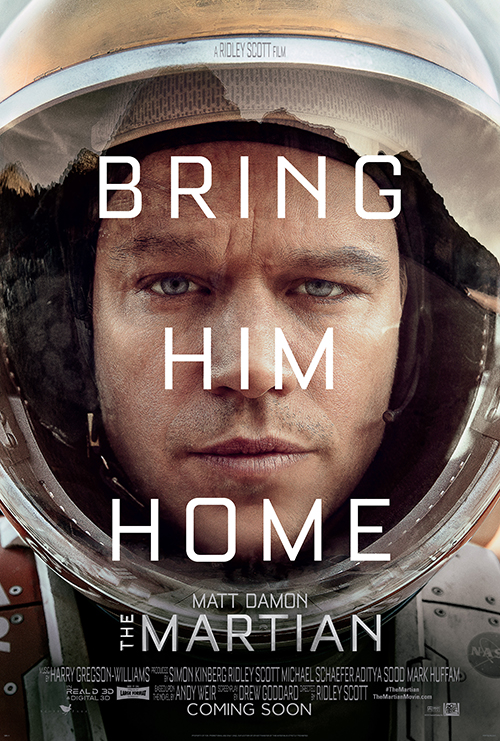 Scott’s current feature is The Martian, and he tapped his old colleague, Scalia, to shepherd the project through the edit room. Scalia spent an hour with me, discussing his craft and providing a wealth of editing wisdom.
Scott’s current feature is The Martian, and he tapped his old colleague, Scalia, to shepherd the project through the edit room. Scalia spent an hour with me, discussing his craft and providing a wealth of editing wisdom.
HULLFISH: You and I have something in common. We went to the State University of New York in the mid-80s.
SCALIA: The unusual thing about SUNY Albany was that they were teaching film as literature. They gave me a good base for film history and got to see a lot of classic films. I took photography. I took theater. I shot a black and white 16mm film. It was good preparation for UCLA.
HULLFISH: Why did you choose to pursue editing after film school?
SCALIA: After school, I specifically chose to go into editing. I loved editing. I discovered it while I was doing my documentaries. It was a form of writing. I felt really comfortable. I was good at it. And I thought that if I wanted to be a director, I needed to get as close as possible to the director and I think that the cutting room is the most intimate environment where you actually make the film.
HULLFISH: The beginning of your editing career was with Oliver Stone. How did that connection happen?
SCALIA: I really wanted to work with Oliver Stone, because I’d seen Salvador and that’s the kind of films I liked: social realism. The way it was shot. It was very close to documentary feel. It was raw. It felt very real. And that’s the kind of director I wanted to work with. Just by chance I met the sister of an assistant editor who was working with Oliver Stone, and I said, “I would love to work with him.” So I met David Brenner, who was assisting at the time and I met Claire Simpson through him and said, “I would love the chance to be part of your editing team.” And they said that they were leaving for the Phillipines to go shoot Platoon but (they encouraged me to call them for the next movie. Platoon happened and got recognized for Editing and for Best Picture. It was a great success for Oliver. So the next time around I said, “I have to work for Oliver Stone,” and Claire gave me a shot to be an assistant on Wall Street and that’s how it started with Oliver Stone.
HULLFISH: I love your comment: “Editing is a form of writing.” I certainly believe that. They’re similar skillsets.
SCALIA: Writing and re-writing – you always make it better. Editing is writing with visuals. At its core it’s the most cinematic of all arts because you use the visuals and sound and you tell a story. There’s syntax. There are phrases. There’s movement. There’s rhythm. These are all elements that are also part of writing.
HULFISH: Your first OSCAR was for JFK. Anyone editor who’s seen it realizes what a daunting project it must have been just to organize and sift through all of the material and crazy formats. Do you wish you’d had an Avid back when you edited JFK? How was it edited? On film?
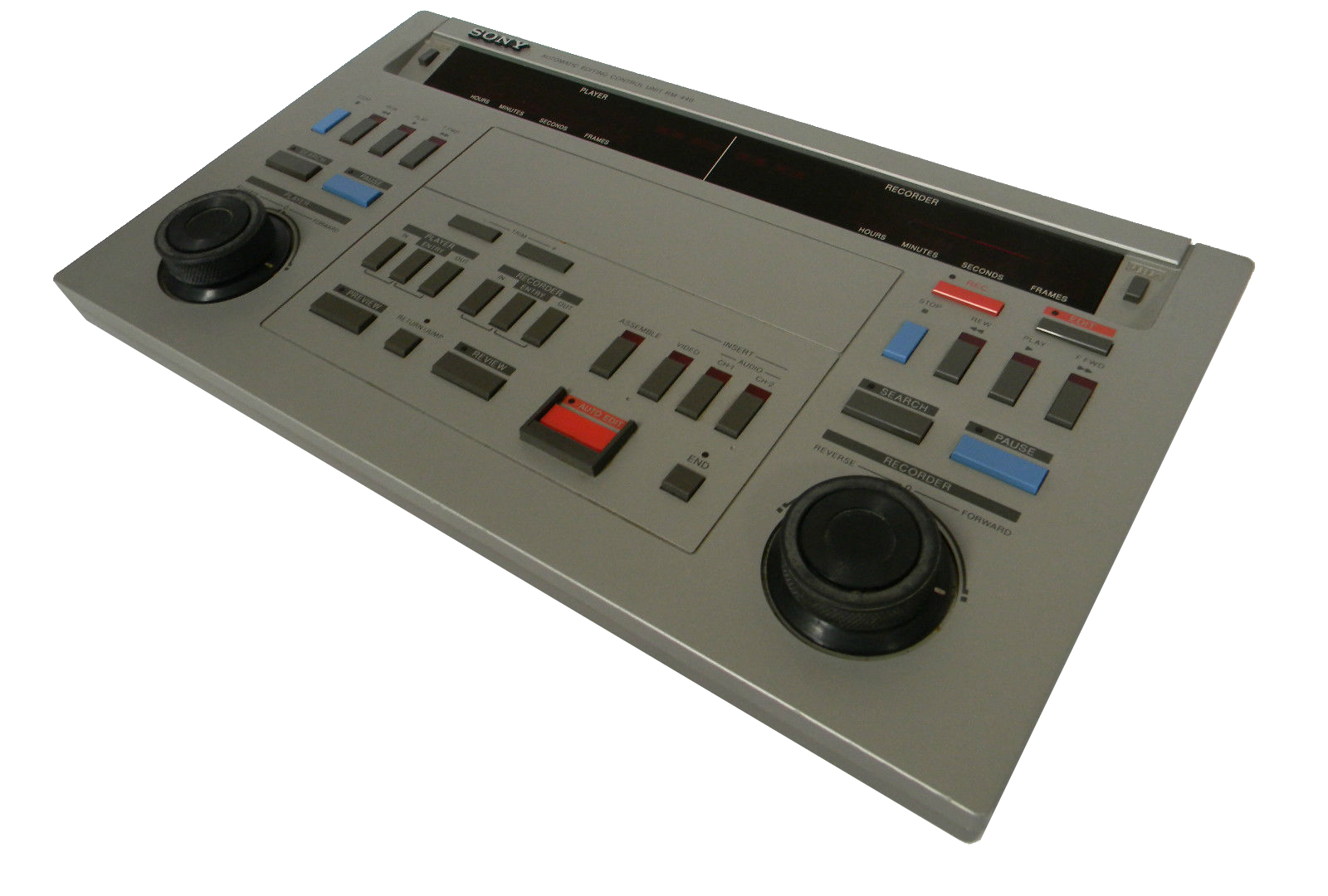 SCALIA: People thought that that movie was the start of digital non-linear editing, but we actually cut that film on film. It was unusual because of all the different formats that were shot. 16mm, 1.85, Cinemascope, black and white, color, different forms of video, Super 8mm. All the different formats had to somehow be worked with. Joe Hutchings (Scalia’s co-editor) and I decided that we needed to consolidate in one format. We transferred all of the material to 3/4″ videotape and then we used a basic Sony RM-440 tape controller. (pictured to the left)
SCALIA: People thought that that movie was the start of digital non-linear editing, but we actually cut that film on film. It was unusual because of all the different formats that were shot. 16mm, 1.85, Cinemascope, black and white, color, different forms of video, Super 8mm. All the different formats had to somehow be worked with. Joe Hutchings (Scalia’s co-editor) and I decided that we needed to consolidate in one format. We transferred all of the material to 3/4″ videotape and then we used a basic Sony RM-440 tape controller. (pictured to the left)
We had to have a lot of material that had to be shot to re-cut with stock footage, with the real actors and have it ready to be played back on TV for the scene they were going to shoot. Imagine the recreation of Gary Oldman playing Oswald. We incorporated Oswald with the actual stock footage. That was all 3/4″ videotape at 30fps. The tape had to be transferred to 24fps. It was very complicated logistically and nightmarish because we had to have all of the material approved by Oliver and sent back in time for playback on set.
We figured out our own way of how to keep track of the image both putting our Edgecodes on 35mm work picture that also matched the sound. We were still working with 35mm mag stripe for audio. We also devised a way that we would punch a hole in one of the frames that corresponded to a negative key number that we could eventually – through the code and through the book – actually conform.
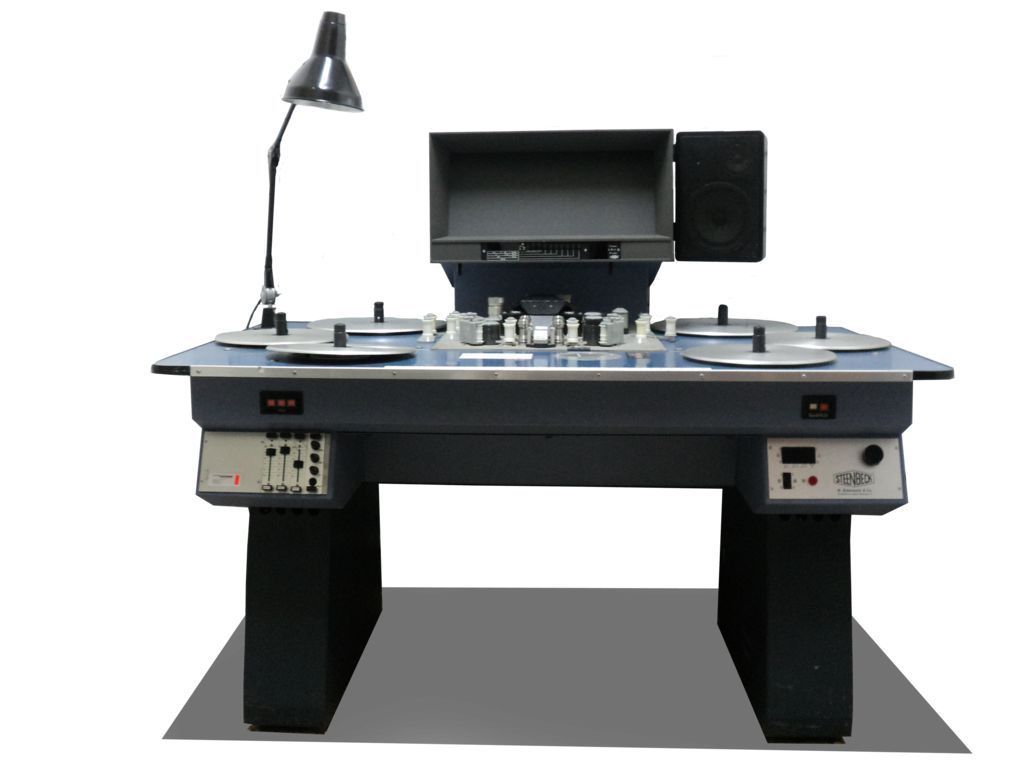 So the idea was to just edit a first pass, a simple edit. But the problem was that as soon as we did our first cut with Oliver, we immediately went and re-cut using the first pass edit as a source and very soon, we lost track of the link between the Keycodes and the audio. We could not possibly figure out where the sound comes from. It was an impossibility. We just went one step too far. So we hired a lot of dialogue editors to match the sound by hand who had to match the 35mm mag with the sound on the 3/4” tape, which was nightmarish. They used phase to decide “is that the take?” They spent a lot of time. I wish I had an NLE back then, but we did it the hard way. Once we had sound matched back to picture again we edited with Steenbecks. (pictured to the right)
So the idea was to just edit a first pass, a simple edit. But the problem was that as soon as we did our first cut with Oliver, we immediately went and re-cut using the first pass edit as a source and very soon, we lost track of the link between the Keycodes and the audio. We could not possibly figure out where the sound comes from. It was an impossibility. We just went one step too far. So we hired a lot of dialogue editors to match the sound by hand who had to match the 35mm mag with the sound on the 3/4” tape, which was nightmarish. They used phase to decide “is that the take?” They spent a lot of time. I wish I had an NLE back then, but we did it the hard way. Once we had sound matched back to picture again we edited with Steenbecks. (pictured to the right)
HULLFISH: After doing several films for Oliver Stone, you formed a long working relationship with Ridley Scott, starting with G.I. Jane. Why do you like working with him and what does he like about you?
SCALIA: I think we get along. We like each other. It’s a comfortable environment in the editing room. I know his taste and he knows mine after all these years. Ultimately it’s the fact that he trusts me. I make the choices of takes, or performances, of music and sound effects and he relies on me to do that. He looks at the cut. If it works, fine. If it needs to be shortened, we talk about it. If he wants to see something else or a different take, we discuss it, but he values my opinion. And what Ridley gives me is a lot of freedom, creative freedom. He’s like that with all of his collaborators. Ridley likes that I have a point of view. I have an opinion about things in terms of what’s chosen. In a lot of our movies we created scenes and moments and emotions through images that were not intended for the way we used them. So it’s this freedom of taking the film any which way we like. He’s not precious about the material. He will always say, “How can we make this better? Is this the best we can do?” But we have a safe environment in the cutting room where I’m allowed to be honest and straight with him if something doesn’t work or if there’s something I like. Sometimes aesthetically we would go for different shots. I think that started very early on when we did our first movie together – G.I. Jane – where he had the second unit shoot some helicopter shots and he hated them because they weren’t the way he wanted them. It wasn’t the perfect day. It was dark and gloomy. I said, “No. Actually it is good. Let’s use that. We will show Washington, D.C. in this light. It’s more realistic.”
You don’t have to win every single battle, but it’s important to be able to listen. And ultimately if there’s something that doesn’t work, it’s much easier to work on the material and show it, rather than arguing about it. We also work very fast and if we feel something works, we stick with it. We don’t second-guess.
HULLFISH: Tell me about the production schedule for The Martian.
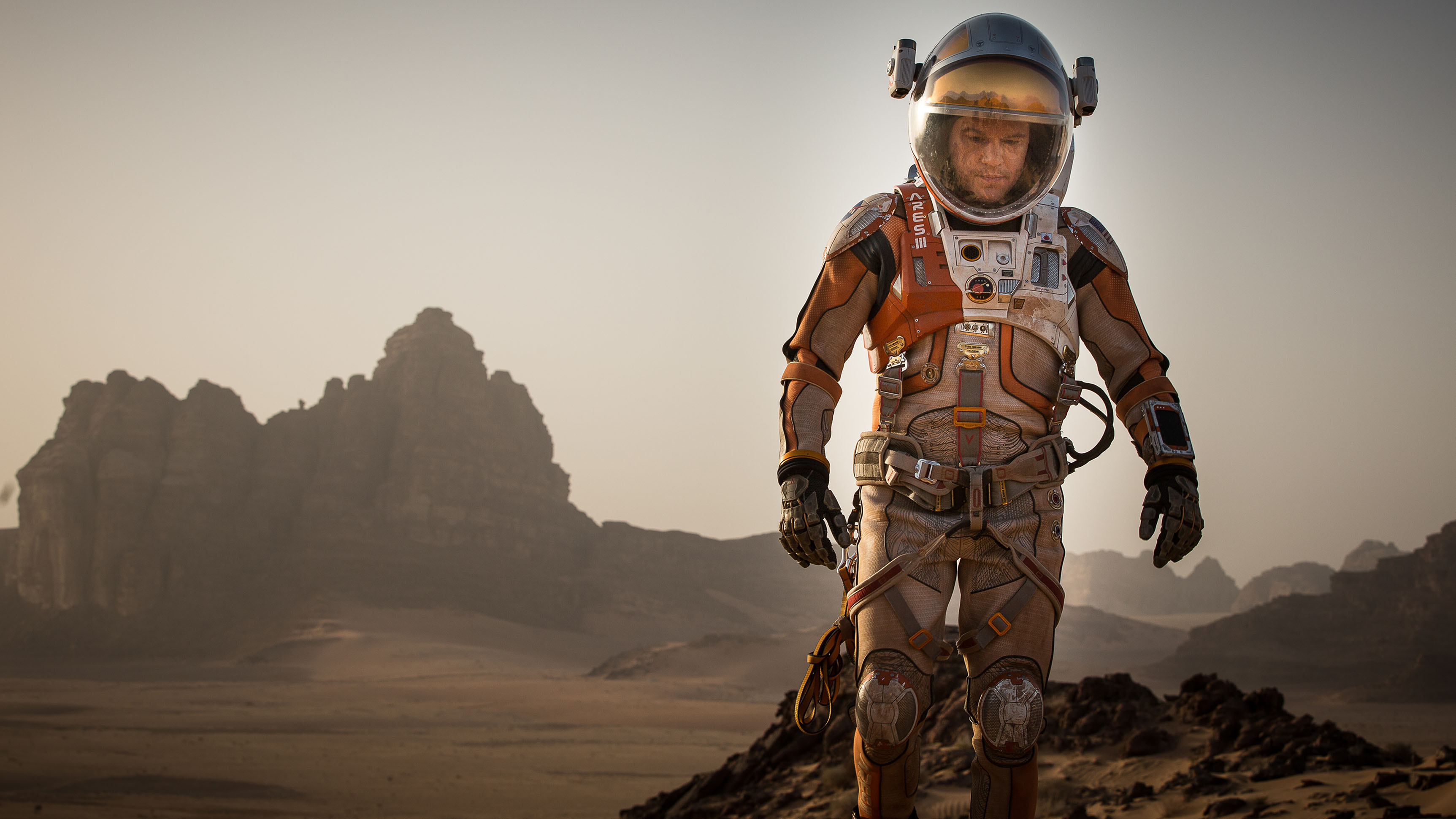 SCALIA: Ridley started shooting in November 2014, so a year later the film was supposed to come out, which is normal. Most of it was shot at a studio in Budapest and then they spent almost a week in Jordan. Shooting was done in 74 days, which is very, very quick considering the scope of the film. They finished shooting around March 21st or 23rd and we delivered the locked cut on August 28th.
SCALIA: Ridley started shooting in November 2014, so a year later the film was supposed to come out, which is normal. Most of it was shot at a studio in Budapest and then they spent almost a week in Jordan. Shooting was done in 74 days, which is very, very quick considering the scope of the film. They finished shooting around March 21st or 23rd and we delivered the locked cut on August 28th.
30 to 32 weeks is normal for post, but we ended having to shorten that by seven weeks, because after the studio saw our first cut they loved it and asked if we could finish it early because the original release was planned for Thanskgiving and it was going to be a crowded weekend. To cut the schedule by seven weeks was really a question of whether VFX could be delivered that quickly. The good thing about The Martian is that the film actually came together quickly in terms of story. When we showed the film to the studio it was in pretty good shape. The first assembly was a 3 hour cut, but when we screened it for the studio it was already screening at 2:25. So we had the story. It was doable if VFX would agree to do it. And they said, yes. We worked six and seven days a week for a long time. At the same time I had my sound team starting to work on scenes for the temp mix, which we would carry throughout the process of previews and changes, all the way through pre-dubs and the final mix. VFX shots would come in, they would be updated, and the sound department would be notified. Everybody was working together to make this happen. Everything came together miraculously well.
HULLFISH: You talked about a lot of collaboration, were you on an ISIS system?
 SCALIA: We had 10 Avids all connected to ISIS (Avid’s shared storage, pictured to the left). Besides the RED cameras, we also shot with GoPro cameras. All of that was ingested into the ISIS. We had probably 300 hours worth of film between the REDs and GoPros. We had about 32 Terabytes of off-line quality Avid media and almost 200 Terabytes of raw files from the 3D RED Dragon cameras shooting 6K.
SCALIA: We had 10 Avids all connected to ISIS (Avid’s shared storage, pictured to the left). Besides the RED cameras, we also shot with GoPro cameras. All of that was ingested into the ISIS. We had probably 300 hours worth of film between the REDs and GoPros. We had about 32 Terabytes of off-line quality Avid media and almost 200 Terabytes of raw files from the 3D RED Dragon cameras shooting 6K.
HULLFISH: Did you cut in 3D?
SCALIA: Yes, of course. We have 3D capabilities in the Avid. I had done that on Prometheus, which was my first 3D movie. We screen our movies in the cutting room every evening in 3D on a nice screen. Then I edit in 2D, but when I play back the scene for myself to review or for Ridley, we watch it in 3D.
I notice that when you edit in 3D, the eye just needs a little bit more time to rest in space, and that affects the choices you make and the shots you take. You can’t do really frenetic cutting or lateral movements. There can be certain things in the foreground that hurt the eye in 3D. Darius Wolski, the DP, was very comfortable with the 3D cameras, I think they had up to 5 3D rigs. I know what 3D can do. Spatially, we’d compare shots in fast action scenes, but I would edit in 2D and make the shots shorter, so there are fast cuts. We had the capability to reduce the 3D convergence, make it tighter or shorter, so not strongly 3D.
In 3D the questions were, “How do we ue the graphics? Where do we position the subtitles and all the other graphics within the frame?” With 3D shots, when we go from a close-up of Mark Whatney to a wide scape we needed to make sure that it balanced out, not only in compositions, but in size. Or if you have dissolves over landscapes, the planes match up. And that’s what we would analyze in 3D to make sure it’s still pleasant to the eye.
HULLFISH: What were the biggest challenges of editing The Martian?
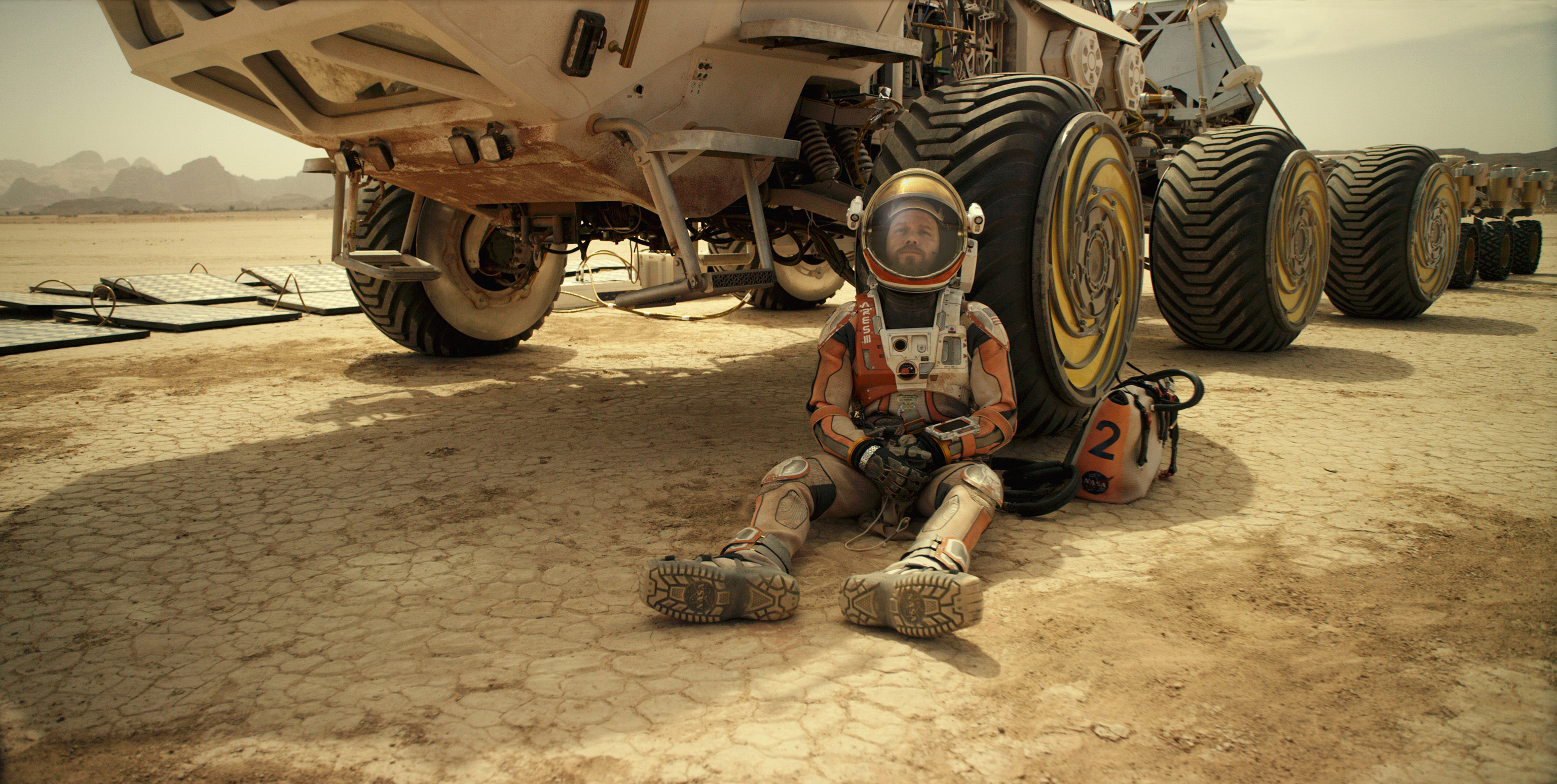 SCALIA: I really enjoyed the process. There weren’t that many challenges. When I spoke to Ridley, I was mostly concerned that I had enough material to make it very specific. I knew we needed to have the shots to be specific, because of the science that we needed to illustrate. You can’t just imply it or hint at it.
SCALIA: I really enjoyed the process. There weren’t that many challenges. When I spoke to Ridley, I was mostly concerned that I had enough material to make it very specific. I knew we needed to have the shots to be specific, because of the science that we needed to illustrate. You can’t just imply it or hint at it.
HULLFISH: How did you utilize the GoPro cameras?
SCALIA: I think the use of GoPro cameras, not only in the “hab” (the Martian structure that Watney lives in) but also in the rover and on the body suit was a way to keep the audience always with Mark Watney. From his first direct speech into the camera and later shots from his shoulder-cam, they make you feel very present with him. So you go through these things and experience the action as he does.
HULLFISH: I’m figuring that between the talents of Ridley Scott and the fact that you had 300 hours of footage, you had plenty of coverage!
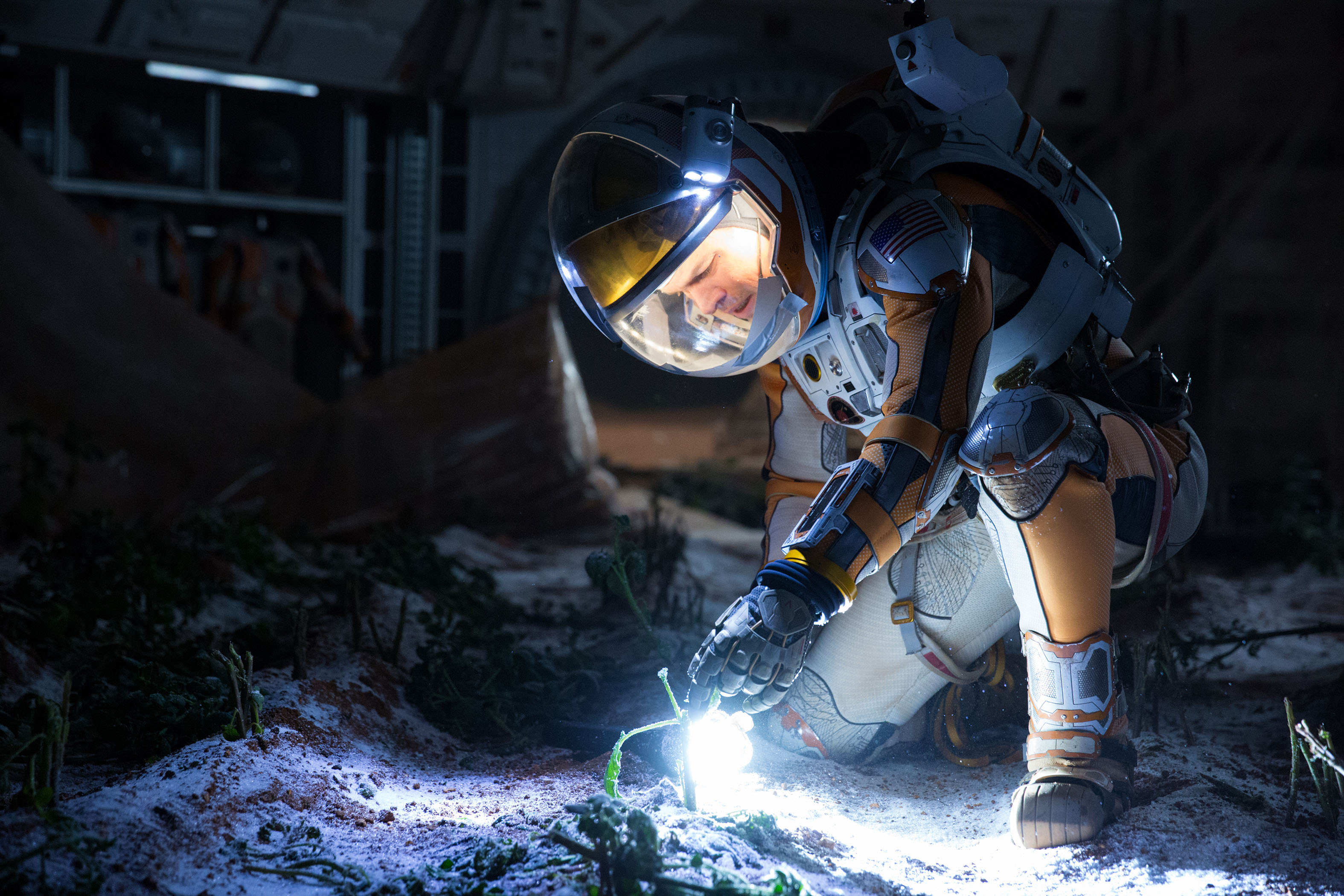 SCALIA: Ridley shot a lot of these scenes several times. He shot at NASA Control Center where the cast had to react to what was happening on Hermes (the interplanetary spaceship). The first time he shot, the cast was reacting to some pre-viz material. Then he had to shoot Hermes without having Matt Damon there acting, so there was a stand-in voice recorded. Then we did the whole thing again a third time with Matt Damon talking to Hermes and NASA. So Ridley didn’t just say, “Oh, I’m going to use this voice over. I’m just going to use these lines and we’ll be done. He covered all scenes all the time with all of the dialog. So it allowed me to be able to jump geographically and be able to move in different places and always have the material that I needed.
SCALIA: Ridley shot a lot of these scenes several times. He shot at NASA Control Center where the cast had to react to what was happening on Hermes (the interplanetary spaceship). The first time he shot, the cast was reacting to some pre-viz material. Then he had to shoot Hermes without having Matt Damon there acting, so there was a stand-in voice recorded. Then we did the whole thing again a third time with Matt Damon talking to Hermes and NASA. So Ridley didn’t just say, “Oh, I’m going to use this voice over. I’m just going to use these lines and we’ll be done. He covered all scenes all the time with all of the dialog. So it allowed me to be able to jump geographically and be able to move in different places and always have the material that I needed.
He did not shoot “Give me this reaction for this or give me those group shots of these people listening.” He would shoot with multiple cameras, four cameras for the whole scene. And the other thing was when we shot a teleconference between NASA and the Hermes or Whatney, not only was the actor on the screen for the other actors to act against, the actor was two rooms down from the set so it was actually happening simultaneously with the GoPro cameras in two different rooms. I had great coverage and I could move around freely. If things didn’t quite match on screen, or I chose a different performance, it’s simple to fix. You comp and you match. You do split screens to get the continuity right. Basically you just have to figure it out and make it work. I just wanted it to feel natural and to feel real… authentic. Part of the challenge was to keep it real and above all to retain the spirit and the humor of the book. Matt Damon did a really wonderful job in creating and giving voice to this character that you enjoy being with. Reading the script and the book there was a levity and kind of a bouncy rhythm to it. And I needed retain that through the editing process. It was about moving it along, keep it humorous, keep it tense, keeping it emotional when it needs to be. I had to balance all of these elements at the right time.
HULLFISH: With the first assembly at 3 hours and the final theatrical length at 2:22, how do you tell the story economically and how do you know you’ve gotten as close to the bone as you can get?
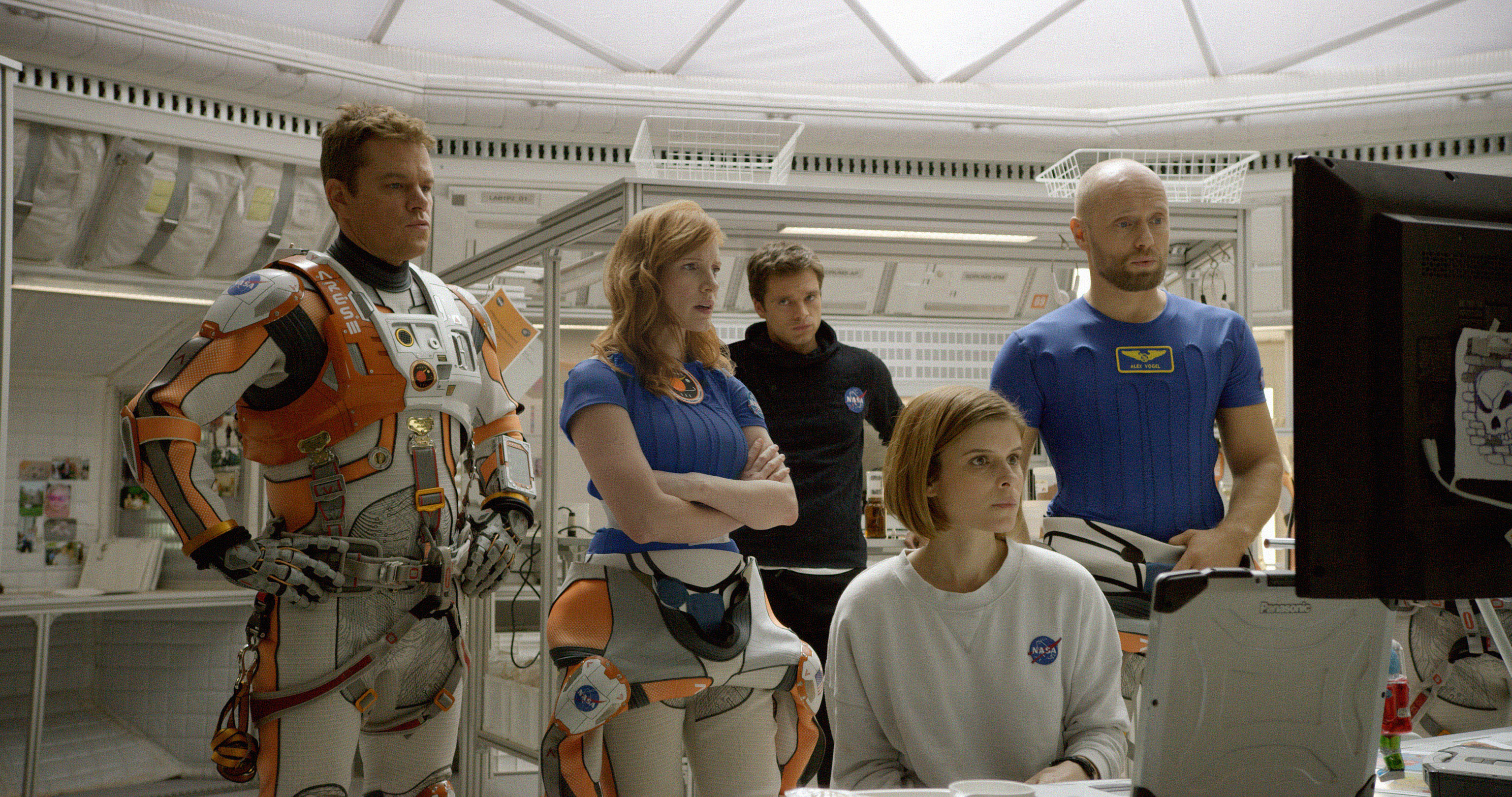 SCALIA: The first cut is really all the scenes in script order and that really is not a film yet. With the rough assembly you see obvious things immediately. You see the movement of scenes. You have full scenes with beginnings and endings and you need to start figuring out where the themes lie in the story and what is important, so you start chipping away, eliminating stuff, trying to make connections, reduce the amount of information. Sometimes visually it’s already been said. You don’t need more dialogue.
SCALIA: The first cut is really all the scenes in script order and that really is not a film yet. With the rough assembly you see obvious things immediately. You see the movement of scenes. You have full scenes with beginnings and endings and you need to start figuring out where the themes lie in the story and what is important, so you start chipping away, eliminating stuff, trying to make connections, reduce the amount of information. Sometimes visually it’s already been said. You don’t need more dialogue.
Sometimes you find that you actually need to add time. The day after Watney does his surgery done, he gets up and says “OK, let’s do the math. This is how much food I have and this is what I have to do” and so forth. We noticed immediately that it was too quick for a character to be so up immediately and finding a solution. We needed to spend more time with him at the beginning to really try to assess his condition and establish his solitude and loneliness. We created new shots and recycled images from later on in the film and added them after the surgery. We changed the backgrounds and backdrops. We re-purposed shots.
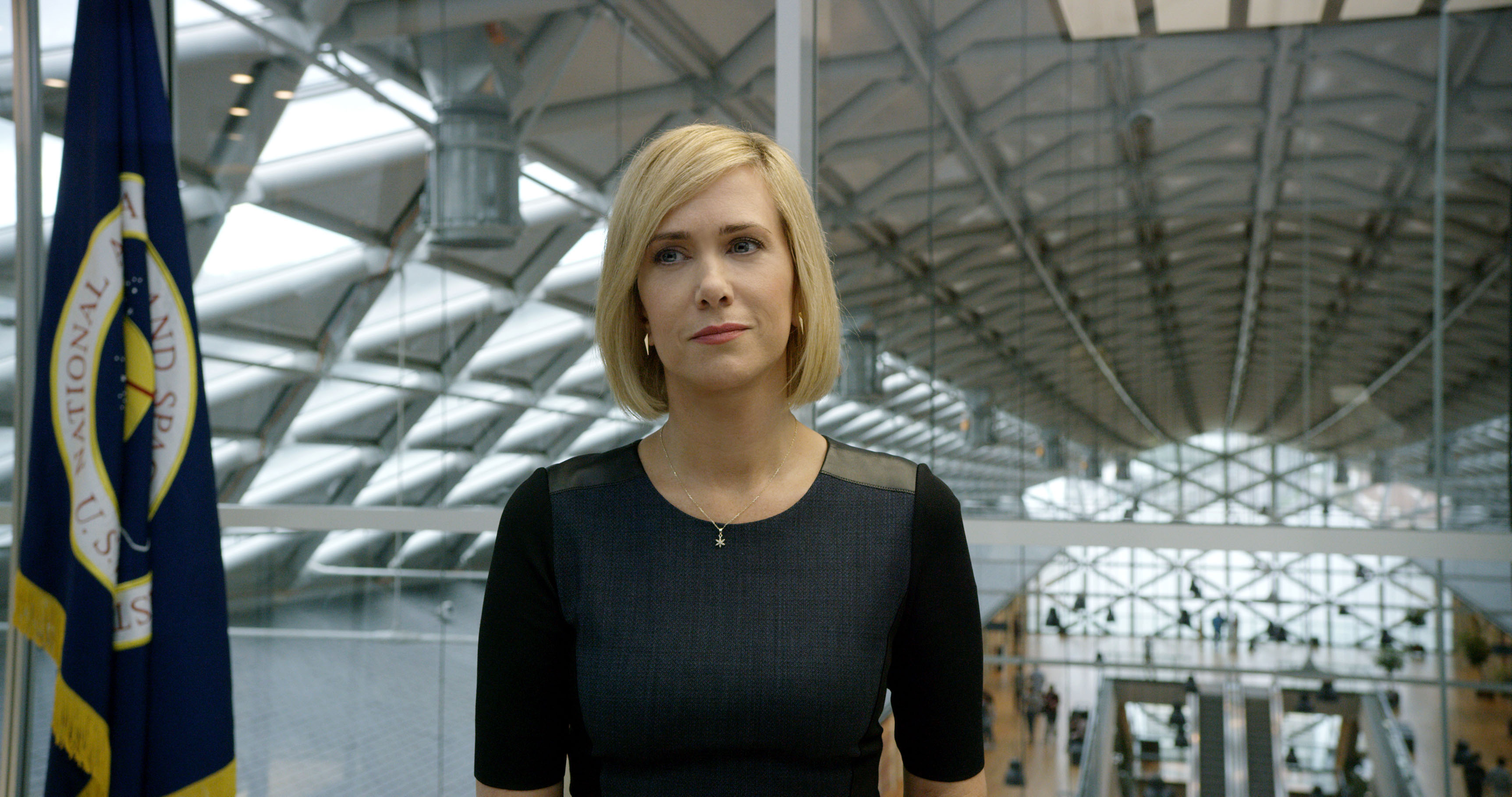 Later on we noticed that there were too many stop and go scenes. We needed to have quicker cause and effect. We needed to consolidate ideas and move it forward. I followed basically a classic Hollywood structure. I know where I need to be to reach the major turns in the story. What you establish very early on is his goal to get off this planet is in the third act, but he’s going to state this thesis very early on. That’s the big goal, but at the same time, you need to do these smaller steps along the way to get to that. For me, it needed to keep moving and keep the entertainment going through the rhythm. You will see many different techniques of how we condensed and expanded time with the overlap of dialogue, with the use of GoPro cameras to go in circles in time. It’s not linear time. So you move through different layers and you keep the rhythm so it doesn’t become monotonous.
Later on we noticed that there were too many stop and go scenes. We needed to have quicker cause and effect. We needed to consolidate ideas and move it forward. I followed basically a classic Hollywood structure. I know where I need to be to reach the major turns in the story. What you establish very early on is his goal to get off this planet is in the third act, but he’s going to state this thesis very early on. That’s the big goal, but at the same time, you need to do these smaller steps along the way to get to that. For me, it needed to keep moving and keep the entertainment going through the rhythm. You will see many different techniques of how we condensed and expanded time with the overlap of dialogue, with the use of GoPro cameras to go in circles in time. It’s not linear time. So you move through different layers and you keep the rhythm so it doesn’t become monotonous.
HULLFISH: Never be boring.
SCALIA: Never be boring, exactly, that’s what Ridley says, “Never be boing.” Good story telling.
HULLFISH: That’s a lot of re-arranging and restructuring and trimming. Does Avid help you do that? Have you tried other NLEs?

L to R – Harry Gregson-Williams and Ridley Scott and Pietro Scalia at The Martian scoring session – Photo credit Benjamin Ealovega
SCALIA: I’m very comfortable with Avid. I wish I was technically more prolific and use all of the bells and whistles that it has, but for me what is fundamental is the organizational structure of the material and how I ask my assistants to bring in the material and how we keep track of that. It starts with the folders and bins: dailies, stock footage, music, VFX, library – everything is in there and we carry this system from one movie to the next. It’s also very important to keep track of the history of my cuts. I know what I did in this cut or that cut, simply by the naming of the cut. It’s a gradual evolution and progression of cuts. The hierarchy of the way it works is that I work in one cut and if I need assistants to work on it, they can take the cut, do sound work, do visual effects work, comp it and then it comes back to me and it gets reviewed with me and Ridley and we put it back in the reel. The organizational part of the Avid is what’s very useful and obviously, the tools, the simple visual effects and comps that we can do … it’s a very versatile tool.
HULLFISH: It’s not just about keeping track of footage, right? But keeping track of the edits and revisions and the many ways that the movie has been delivered and how to track approvals and notes from the studio and others. That can be a lot harder than it sounds, especially when you’re working very quickly.
SCALIA: Many editors have their own system, but it’s really about how do you keep track of the latest cut. What are your naming conventions? I just happen to use whatever I’ve learned from the films I’ve been on and how those cutting rooms were organized. For me, it’s proved to be a solid system and a simple one. A simple one that you can alter and change according to your own needs.
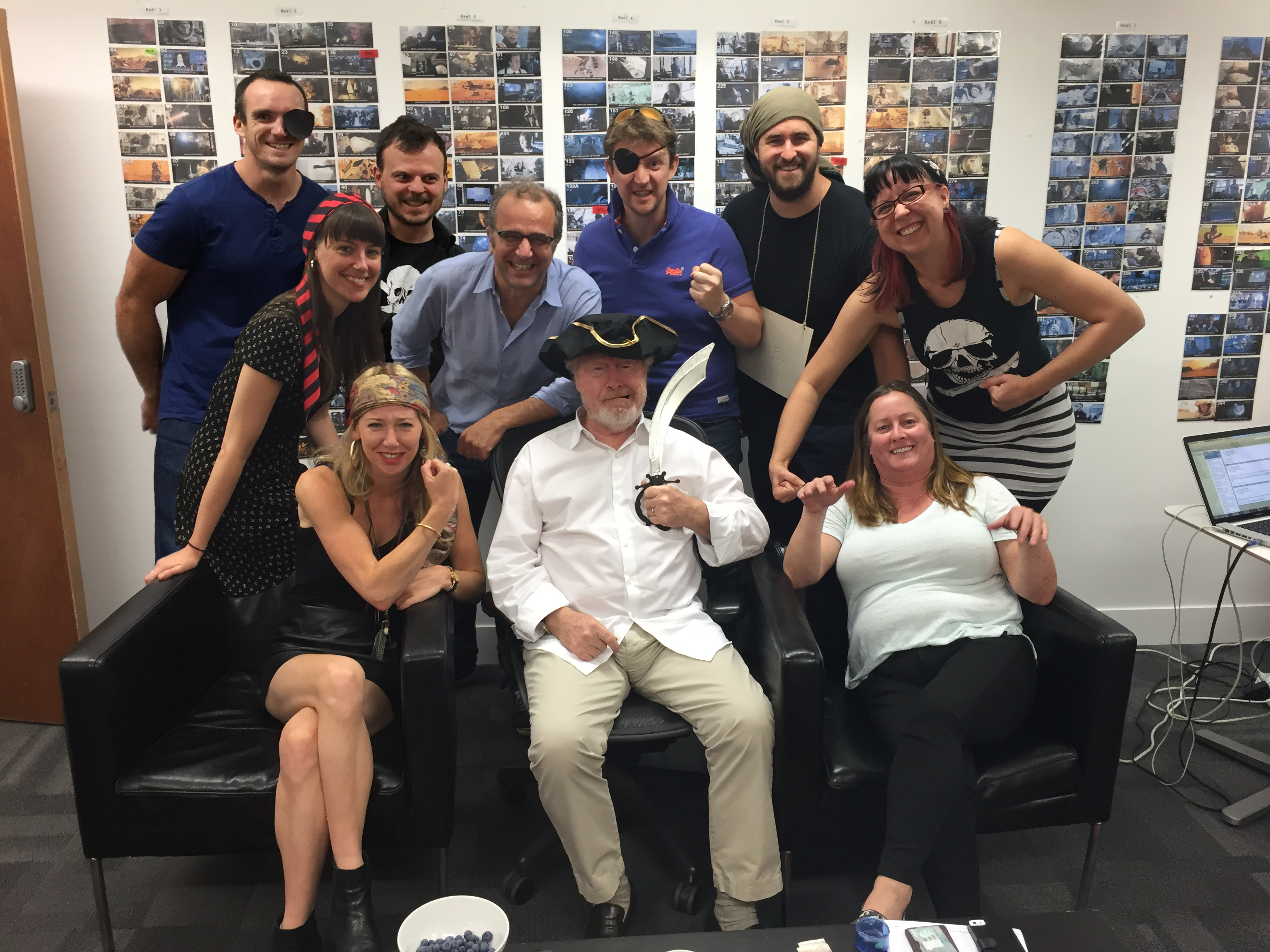
The Martian editing team on “pirate” day (you’ll have to see the movie to get the connection) Top row, L-R: Rob Jones (Editiorial PA), Zoe Bowers (2nd Assistant Editor), Paolo Buzzetti (2nd Assistant Editor), Pietro Scalia, Tony Lewis (Music Editor), Laurence Johnson (1st Assistant Editor) & Cheryl Potter (Additional Editor Bottom row, L-R: Elise Anderson (Assistant Editor), Ridley Scott, Teresa Kelly (Post Production Supervisor)
HULLFISH: I interviewed Eddie Hamilton, with whom you co-edited Kick-Ass, and he is really a student of story. What advice do you have for editors on the topic of storytelling?
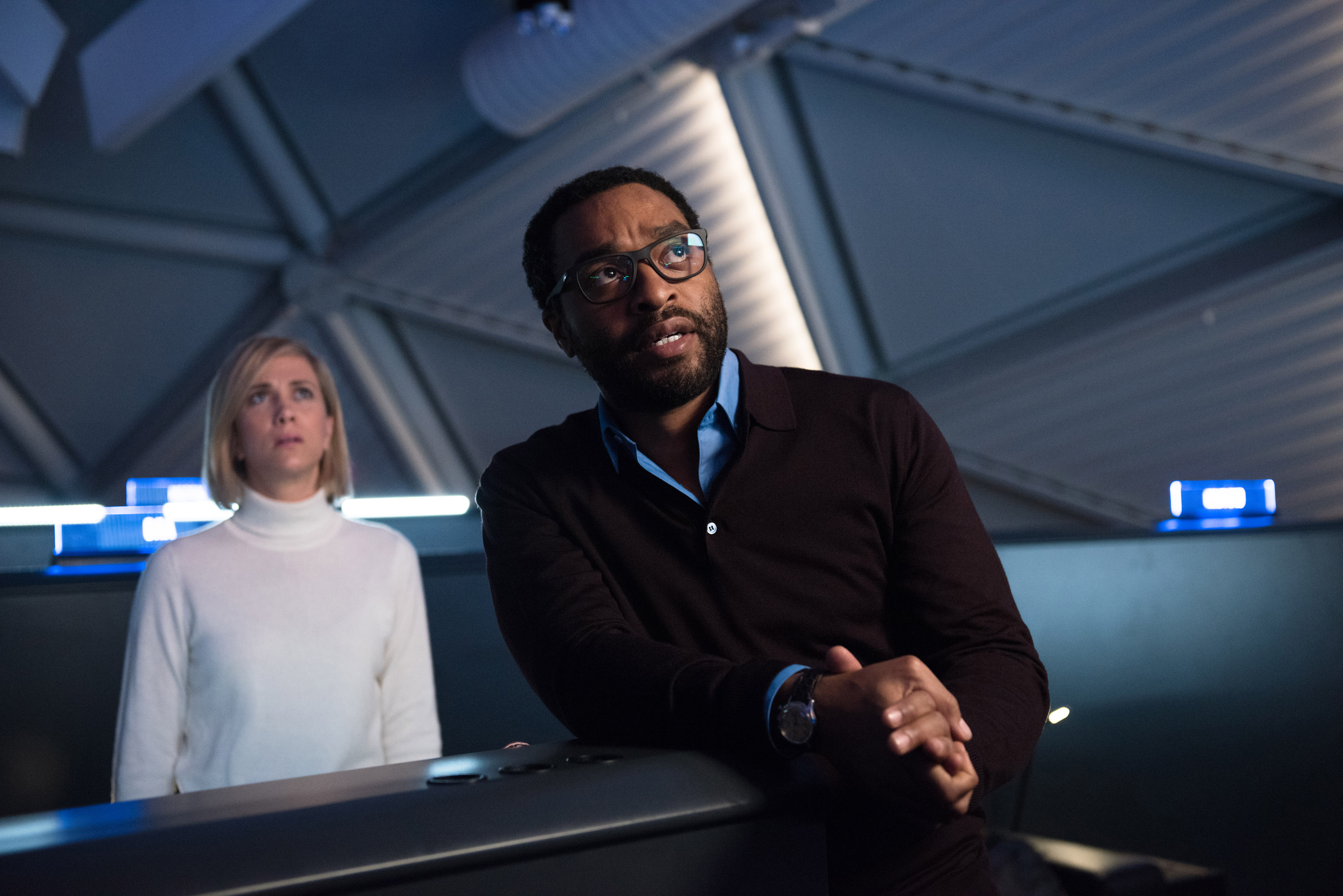 SCALIA: The best advice that I can give anyone, is that it all starts with character. Any story starts with character. The decisions are based on character. Who is this character? Where are we with the character? What reinforces character? How does the identification process happen with the viewer? What are the moments that build character? Are those moments essential to the story? How does the character grow? Because you’re going to find the character at the beginning is going to go through some transformation. So the thing for me is to build character.
SCALIA: The best advice that I can give anyone, is that it all starts with character. Any story starts with character. The decisions are based on character. Who is this character? Where are we with the character? What reinforces character? How does the identification process happen with the viewer? What are the moments that build character? Are those moments essential to the story? How does the character grow? Because you’re going to find the character at the beginning is going to go through some transformation. So the thing for me is to build character.
The second decision that layers on top is “How well can I tell the story?” What is essential to the story? What are the causes and effects of the story? Why am I showing this? What information do I get from this point in the narrative? How do I move the story along? Am I telling it well? Am I drifting?
And finally is structure. Should one moment precede another moment or follow it? It will give me a different effect of what happens afterwards. We had a flashback in the middle of The Martian which was in the script where we introduce Hermes as a flashback of the accident that happened on Mars. It worked really well in the script and it’s great to start the movie without seeing the accident, but when we edited the movie following the script, the movie just came to a complete stop 40 minutes in. So we re-structured it and put the flashback at the beginning of the film. It’s a little more conventional, but it gets you going. When we find Mark Watney by himself, thinking about the crew members, we already have an image of them.
So character, story, structure.
HULLFISH: You have worked with some of the greatest directors of our generation: Oliver Stone, Bernardo Bertolucci, Ridley Scott and many others. Are they similar in the way they work with you?
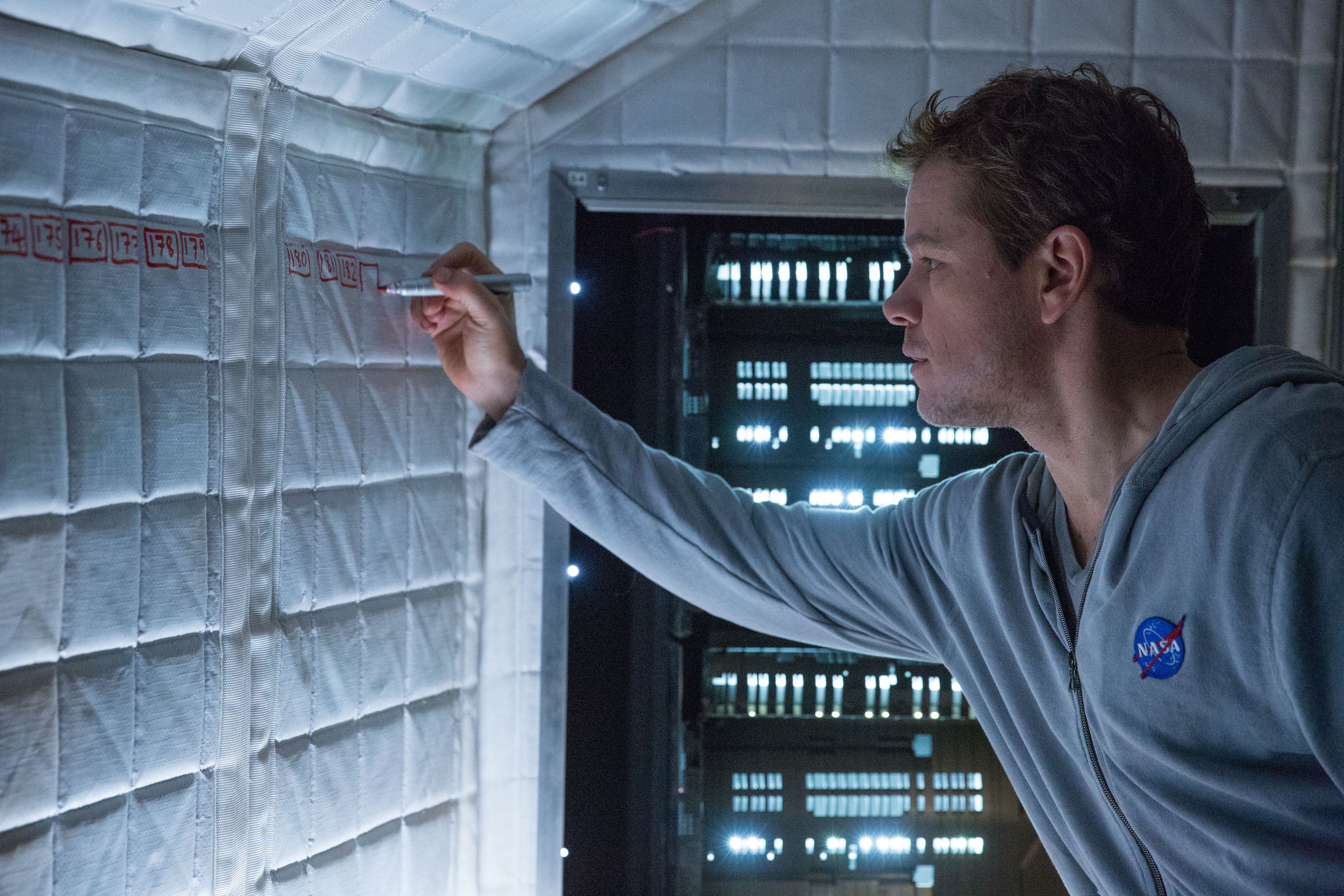 SCALIA: I think most directors that I have worked with have enjoyed being in the cutting room. For them it’s a pleasure to be there and to revisit the material. Even at that final stage, it’s still open to a lot. The movie changes continuously. The emotions are affected by how the story is told, how music is used and how sound effects are played. It’s all about telling a good story, and I think most directors just enjoy that part a lot.
SCALIA: I think most directors that I have worked with have enjoyed being in the cutting room. For them it’s a pleasure to be there and to revisit the material. Even at that final stage, it’s still open to a lot. The movie changes continuously. The emotions are affected by how the story is told, how music is used and how sound effects are played. It’s all about telling a good story, and I think most directors just enjoy that part a lot.
HULLFISH: Almost every editor I know, including me, are musicians or have a musical background of some kind. You’ve had some music-based credits in film, and obviously as an editor, you have a say in the way music is used to tell the story and evoke emotion. Talk to me about the use of music in feature films.
SCALIA: I love music. I have a vast library of music. When working with music, it’s not that I have this piece of music and I’m going to cut to it. Music really comes later. I cut the scene and I try to find the rhythms and the patterns within the scene itself. Then the music comes. Do I need to establish a tone or a mood? Do I need tension? What do I want to convey and when do I want to do that? Where do I place it?
For example, in the surgery scene that Mark Watney does, I used a piece of music that had a slow-build crescendo, because I wanted to sense the tension and the pain and I knew right after the crescendo, the high point, where I wanted to end. But I also had to figure out where to start it.
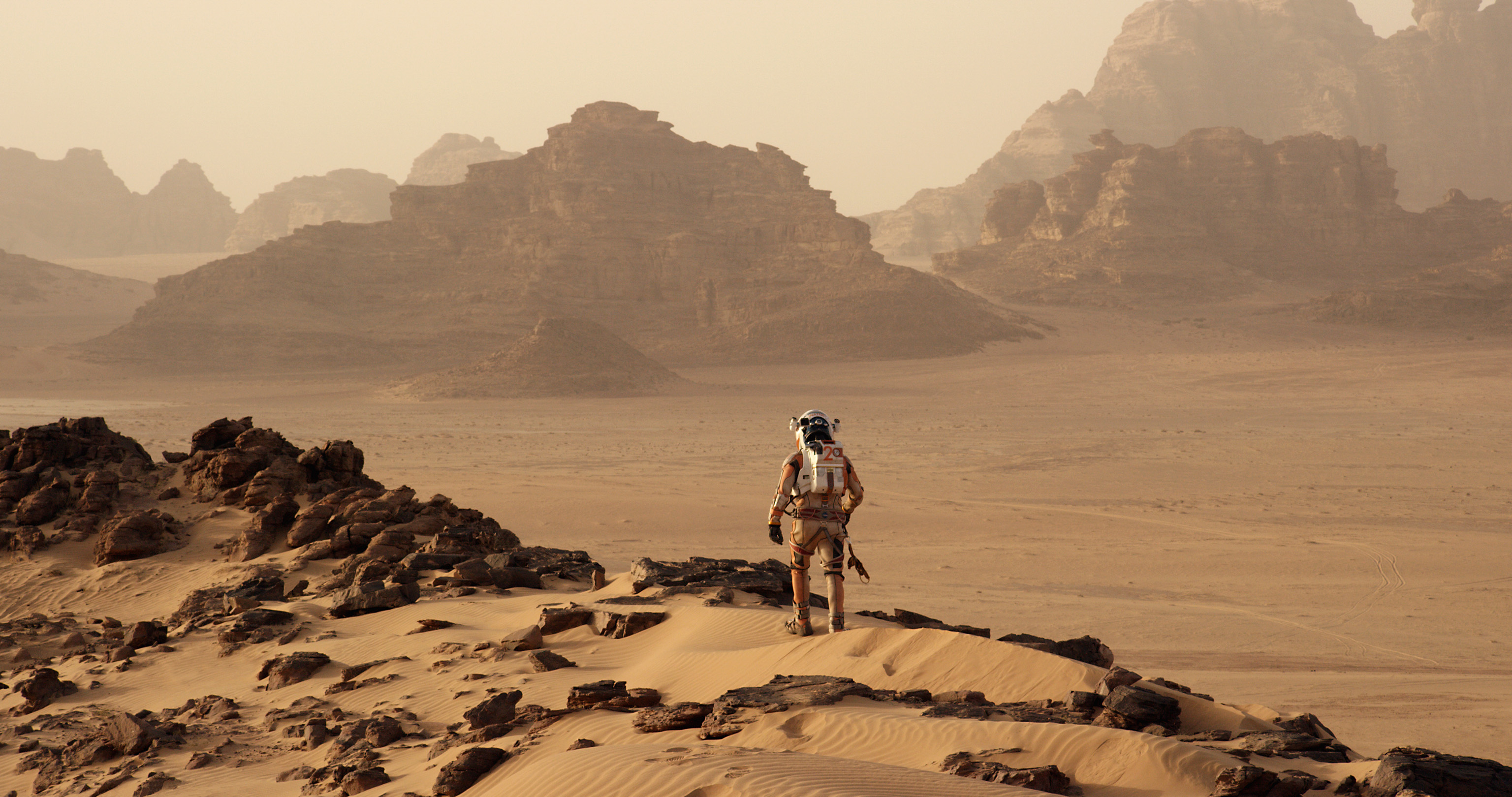 Try different pieces of music, just to see what affect the scene has itself. You might go for the obvious choice, and that’s pretty boring, so go for the unexpected one. Sometimes inspiration strikes at unexpected moments. I went to a friend’s house and his wife had a gigantic Tibetan gong. She played the gong and I thought that it had a beautiful sound: these expanding waves. I thought, “That could be a sound for Mars!” I suggested to Harry Gregson-Williams, that the gong could be the signature of Mars. We used it go give a character to Mars and the vibration was then incorporated into the beginning of the film. We used other techniques on the gong by scraping the surface so that it creates these “voices” – these unusual sounds. So rather than creating it in a synthesizer we created it with a gong. So inspiration can happen any time. Sometimes the most unexpected things happen when you put a piece of music to images.
Try different pieces of music, just to see what affect the scene has itself. You might go for the obvious choice, and that’s pretty boring, so go for the unexpected one. Sometimes inspiration strikes at unexpected moments. I went to a friend’s house and his wife had a gigantic Tibetan gong. She played the gong and I thought that it had a beautiful sound: these expanding waves. I thought, “That could be a sound for Mars!” I suggested to Harry Gregson-Williams, that the gong could be the signature of Mars. We used it go give a character to Mars and the vibration was then incorporated into the beginning of the film. We used other techniques on the gong by scraping the surface so that it creates these “voices” – these unusual sounds. So rather than creating it in a synthesizer we created it with a gong. So inspiration can happen any time. Sometimes the most unexpected things happen when you put a piece of music to images.
HULLFISH: One of my passions is color grading. And one of the most referenced “looks” in color grading is Black Hawk Down. You won an OSCAR for editing that movie. Did the dailies look like the movie that was shown in the theaters?
SCALIA: Ridley is very particular about the way things look. I have to say that it was the D.P., Slawomir Idziak’s, choice of colors and gels that already gave the film that look. It definitely existed in the dailies that we received. When we did the DI (digital intermediate color grade), it was simply enhanced by Ridley by making it a little more contrasty or highlighting certain colors, like to make certain scenes a little bit bluer than they were, but the DNA and the colors were already inherent in Slawomir’s photography.
HULLFISH: Pietro, thank you so much for sharing with us about your process and craft in editing The Martian.
SCALIA: It was my pleasure.
To read more great interviews in my Art of the Cut series, check out this link and follow me on Twitter @stevehullfish.
I hope to share more about The Martian‘s workflow and post-production organization when I interview The Martian‘s “Additional Editor,” Cheryl Potter.

Filmtools
Filmmakers go-to destination for pre-production, production & post production equipment!
Shop Now